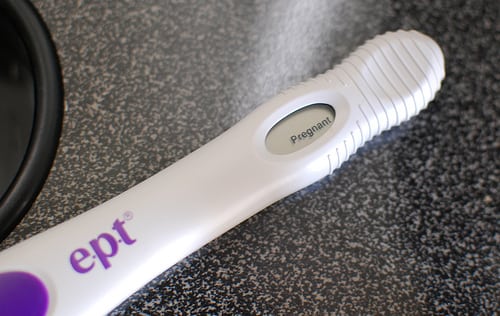By Danielle, contributing writer
Many of the interventions which occur in a standard labor and delivery hospital birth are consented to without much thought by the mother. But is this what’s best for baby and mama? Is this evidence-based?
Not necessarily.
In the Know the Risks series, we will discuss the risks of conventional maternity care. This post will discuss the risks of epidurals, as well as briefly cover some alternatives.
Seventy-one percent of women in the United States use an epidural for pain management during birth, which has grown 10% in the last decade. Are women becoming less able to withstand birth? Or, is this a fad? Let’s dig a bit deeper.
Risks of Epidural
An epidural is a pain management anesthesia that blocks nerve impulses from the lower spinal segments, i.e. blocks feeling in the lower part of the body. The risks of epidural are many, some physical and some not. While epidurals can help facilitate a natural birth, more of than not, they are another intervention on the domino leading to a cesarean section.
Mothers who utilize an epidural may experience these risks:
- Higher percentage need an assisted delivery – by forceps or vacuum. This also leads to a higher likelihood of perineal tearing.
- Increased risk of fever.
- Increased need for pitocin, as an epidural slows down second stage labor.
- Low blood pressure, which can also lessen the baby’s oxygen.
- The most commonly seen side effect is a headache post delivery, called a “spinal headache.” This is because epidurals can cause slowed breathing and drowsiness in the mother. Many moms will consume caffeine or an OTC pain killer to help with this.
- Epidurals seem to influence the mother’s hormones, which may lead to issues with breastfeeding, detaching the placenta, and even postpartum depression.
- Less success breastfeeding, and higher likelihood of engorgement.
- The medications present in the epidural do cross the placenta and go into the baby’s bloodstream. This causes similar reactions in the baby, including drowsiness.
- The IV fluids given to the mother who is using an epidural will also be transferred to baby. This causes an unnaturally high birth weight – leading doctors to believe later on that baby has lost too much weight (and possibly encouraging formula use).
The Intervention Domino
Modern maternity care looks at birth as a medical event – the mother is “sick” and needs help. But birth has been seen as a natural event for generations, and a mother typically does not need any help birthing her baby.
With the use of the modern hospital, birth has been turned into a business, an expensive one at that. When a woman steps into the hospital in labor, an electronic fetal monitor is hooked up to her, where physicians watch her and baby’s every heart rate fluctuation. Nevermind that this intervention has shown to not help maternal or fetal outcomes one bit.
Then, pitocin may be used to augment the labor. The pain from the unnatural pitocin contractions causes a mother to want pain relief, so an epidural is administered. This makes mom and baby tired, possibly lowering the baby’s heart rate, and confines the mother to the hospital bed .
When confined to bed, mom cannot move her body to allow the baby to make its moves out through the pelvis and birth canal, making it harder for the mother to push the baby out. Finally, an assisted delivery or cesarean section is ordered because the process is taking too long.
To learn more about this, watch the Business of Being Born (and part II), which is available online and on Netlflix.
Alternatives to Epidural
The good news is that there are ways to avoid an epidural and enjoy natural birth, the way nature intended. Plan your birth ahead of time with these things in mind, and your chances of avoiding interventions that may harm you or your baby will decrease.
- Get out of the hospital! See if a homebirth midwife or birth center is available in your area. This is the single best thing you can do to ensure your birth is healthy (and happy!).
- Develop a birth plan. Jot down everything you do and don’t want for your birth and newborn, and be sure your birth team, including your medical provider, agrees before the birth.
- Get a doula. A doula is a birth assistant trained in natural pain relieving techniques. Their presence at birth has shown to decrease the need for medical pain relievers, and provide better maternal outcomes.
- Practice visualizing and being positive! Bury the idea that birth is normal and natural deep within your soul, and trust your body. Hypnobabies is a popular program that helps mothers shift their negative feelings about birth and bring them through birth with less pain.
- Prepare your body. Do daily exercises aimed at opening and softening your hip muscles and tendons (like these Spinning Babies exercises), and use a herbal protocol to prepare your body for birth, (like Dr. Christopher’s Birth Prep). It’s also good to consider your other supplements, such as omega 3’s. The four weeks before birth, be sure to stock up on dates, nuts, seeds, magnesium, fatty acids, and lots, and lots of water.
Epidurals can be beneficial, however, they are much more risky than physicians lead on. Plan a natural birth to avoid this invention and it’s risks to you and baby.







